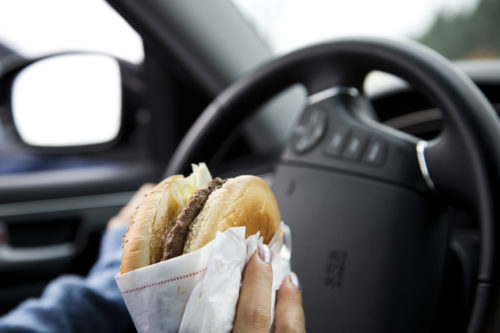When you’re in pain, the last thing you want is for your doctor to tell you that it would get better if you just lost weight. In fact, weight is a leading reason why people in pain (and people in general) don’t go to the doctor – they don’t want to be harassed about their weight.
In many cases, extra weight does exacerbate your pain. But it’s difficult to take the weight off when you hurt.
A July 2019 article in Scientific American discusses a University of California study of weight loss that concluded obese women have better outcomes when they focus on overall wellness and body positivity instead of dieting. Those who dieted lost weight faster but put it back on within a year. Those who followed a more general plan of just eating healthy food when they were hungry and trying to feel good about their bodies kept weight off for longer and showed more improvement in their overall health – and their mental states.
It’s a good study because it’s in keeping with what we should do as nutritionists – encourage healthy eating habits for life, rather than focusing solely on weight loss. As a nutritionist who specializes in pain management, my job is not to help patients to lose weight, but to understand that the food they eat can exacerbate – or help alleviate — their pain. The nutrition plan I give a client for pain management is often a good nutrition plan for reasonable weight loss too, but it’s the pain we focus on.
I prefer to focus on overall wellness. Nutrition, exercise and overall wellness go hand-in-hand with pain management. If you eat healthy food and get regular exercise, your body will hurt less and that’s a positive cycle – if you hurt less, you’ll get more exercise and your overall wellness will improve.
A lot of my patients’ pain is either caused or exacerbated by inflammation and carrying extra weight puts extra stress on already-inflamed joints. But it’s the food you eat that really exacerbates inflammation, no matter what your weight.
Cut back on the big three
Salt, sugar, and alcohol are the three big dietary causes of inflammation so for most people, treating pain also means cutting back on their favorite treats. That means a lifestyle change because patients need an overall nutrition plan that they can keep up with indefinitely, not just for a short-term diet.
Keep in mind that I never completely take away someone’s sugar, salt or alcohol. Pain management and overall wellness are things that you have to be engaged in. If your heart isn’t in it, you’ll fail. If you give up everything you love, your heart isn’t going to be in it, so we have to find a lifestyle and nutrition plan that work for you.
Take small steps
When a new patient comes in, my first step is to find out their normal diet and activity and then figure out what reasonable steps they can take to improve their overall health and pain levels.
The keyword there is “reasonable.”
People sometimes think too big. You can do a lot of little things to get better but if you set your goal too high, you’re less likely to stick with it. For instance, someone who spends most of their time on the sofa watching tv shouldn’t set a goal of going to the gym for two hours a day. Instead, they could start by committing to lifting a water bottle while watching television.
It’s not just that finding the motivation to go to the gym for two hours is hard; it’s that if you overdo it on Day 1, you may hurt too much to get out of bed on Day 2. Instead, do smaller activities throughout the day – take a walk each day or spend some time in the garden. Commit to playing with your grandchildren several days a week or just to standing up and walking out to the mailbox and back every time there’s a commercial break.
Plan ahead for mealtime
If you want to set yourself up for success, start by planning your meals. Think about what you’re going to eat not just today, but all week. Then go to the grocery store and buy the things you need. If you know you won’t have time to prepare meals on certain days, prep them in advance. Spend some time on Sunday getting everything ready for easy meals all week. And remember that an important part of that equation is making a list and going to the grocery store and buying the things on the list. That sounds obvious, but it’s often a stumbling block — if you don’t have the food in the house that you meant to eat, you’re not going to eat it. Go to the grocery store and buy the right things.
Get your family to help
Family support is also a make-or-break factor in a patient’s nutrition. A lot of times when I’m talking to a client about changing their diet, they’ll say “I could do that but I have to cook meals for my whole family and they won’t eat those things,” or “my spouse would never go along with that.”
But families have to work together on this. If a family had a child with a serious food allergy, the whole family would stop eating that food – at least in the house. Nutrition for pain management is similar; a person with serious pain has to change their diet in order to function normally and the whole family needs to support that.
Getting your friends on board doesn’t hurt either. If you were going to run a marathon in the morning your best friend wouldn’t take you out drinking heavily the night before. This is similar – if you need to change your lifestyle to manage your pain, get your friends to support that.
Set your own goals
I ask every patient to give me three goals. I don’t tell patients what their goals should be – I want them to come up with goals on their own. But they have to be measurable goals and they have to be written down and tracked. Your goal isn’t just “drink more water” – it’s to drink a certain amount of water each day. If that’s a liter of water, write that down – “drink one liter of water each day” — and then track it.
Make a backup plan
And the truth is that no one manages to stick to their plans 100 percent of the time. Everyone gets busy, gets stressed, runs out of time and then drives through McDonald’s or throws a can of soup into the microwave.
But you can still make healthier choices, even in a fast-food drive-through lane. When you go to the drive-through, get the grilled chicken sandwich instead of the fried chicken sandwich. Get a small fry instead of a large fry, skip the milkshake and get your iced tea half-sweet instead of full sweet.
If a can of soup is the kind of thing you might heat up in a pinch, buy low-sodium soup. And if you throw your hands in the air and open a can of vegetables instead of cooking fresh veggies, rinse them off to get rid of some of that sodium.
The bottom line
The bottom line is to make a plan that works for you in the long term. Focus on your overall health and pain management for life, not just a quick weight-loss diet. You’ll feel better in the long run.



